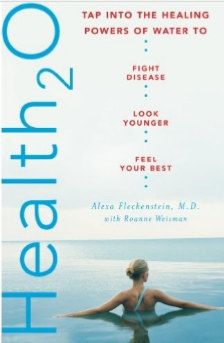If your health problems include chronic pain in your joints or back, headaches, or ear infections, you might benefit from a craniosacral therapy — after consultation with your doctor, of course. During a session of craniosacral therapy, you lie on your back, fully clothed, on a cushioned table. As the practitioner places her hands under your back on the connection between your head and neck, there is no sensation of “forcing” a movement. “I try to detect and focus on the deepest reservoir of the body, below the ‘radar’ of the conscious mind and even of the muscle,” says Dr. Eurydice Hirsey in Own Your Health—Pain: back pain, arthritis, migraines, joint pain and more, by Adam Perlman, MD, MPH. “I often just follow the body’s own impulse, gently helping it to undo the resistance in its own way, without pushing on the muscles or joints,” says Dr. Hirsey, a chiropractor who is also trained in craniosacral therapy. “This is how craniosacral work differs from chiropractic or even massage, where the practitioner might force or create a change in the body. It is the patient’s own response to the practitioner’s gentle touch that provides the release.”
When the muscle resistance does finally relax, the sensation is one of deep release from a tension you might not have been aware of. “For some people this can be an enormous, sometimes volcanic release,” said Dr. Hirsey. “They may cry, laugh or feel anger, often depending on whether the physical restriction in the body came from an emotional trauma.”
Craniosacral therapy, which can be performed by other practitioners, such as chiropractors, massage therapists, nurses and physical therapists, grew out of the system of osteopathy and treats the central nervous system and its relationship to the spinal cord in a similar way. Practitioners say that craniosacral “rhythm” within the body comes from the regular pulsing of the liquid — called cerebrospinal fluid — that bathes, nourishes and protects the spinal cord. It is through the regular pulses of the cerebrospinal fluid that the brain transmits nerve messages to keep the body alive and functioning.
Blockages or restrictions in the craniosacral fluid can result from tension in the muscles or “fascia,” the tissue just under the skin that overlies muscle and some organs, like a kind of inner “sleeve,” says Dr. Hirsey. “As I place my hands on the spine and head of my patient, I can often feel enormous resistance to the flow of cerebrospinal fluid, caused by blockages in the tissue,” she explains. “Any injury or trauma that alters or minimizes the flow of this fluid can cause pain and have a negative effect on our well-being and health.”
No matter who the practitioner is, the most important component in effective treatment is that the practitioner take into account the condition of the entire body, and that the technique is never used to replace necessary conventional treatment.
What’s the Evidence?
No controlled trials of craniosacral therapy seem to exist, according to one author, Dr. Edzard Ernst, who surveyed the literature, pointing out that Dr. Upledger himself, an osteopathic physician who developed the technique, does not cite them in his own writing. “Even though small movements between cranial bones are possible, there is no good evidence to suggest that restrictions of these movements have any health related relevance,” writes Ernst. -Ernst, Edzard, ed. The Desktop Guide to Complementary and Alternative Medicine: An evidence-based approach. Harcourt Publishers Limited 2001. P. 48.
However, practitioners, patients and parents claim that the technique is beneficial for problems such as birth trauma, chronic pain, cerebral dysfunction, cerebral palsy, colic, depression, dyslexia, ear infections, headaches, learning disabilities, Méniere’s disease, musculoskeletal problems, migraine, sinusitis and stroke. Young children are believed to respond particularly well. Personally, I have found regular craniosacral treatments helpful in dealing with the chronic musculoskeletal pain of Marfan Syndrome.





I don’t have a clue how it works, but I have felt such a delicious sense of well being and completion after a session of cranial-sacral therapy.
LikeLike
This was an incredible post. Really loved studying your blog post. The results was very informative and helpful. I hope you proceed posting and updating frequently. Looking forward to your subsequent one.
LikeLike